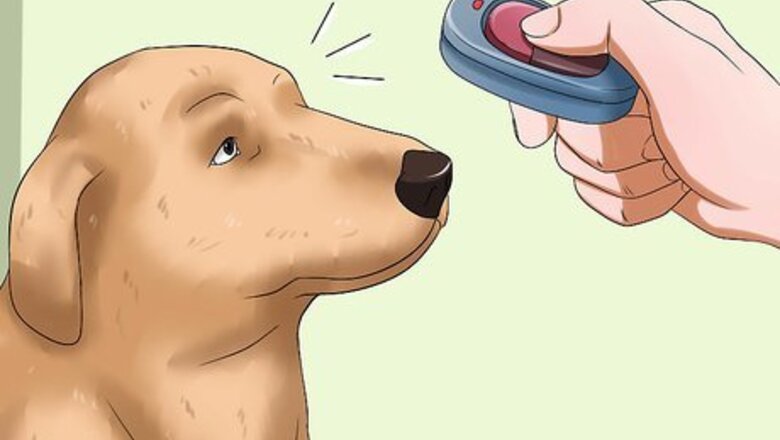
views
Preparing the Introduction
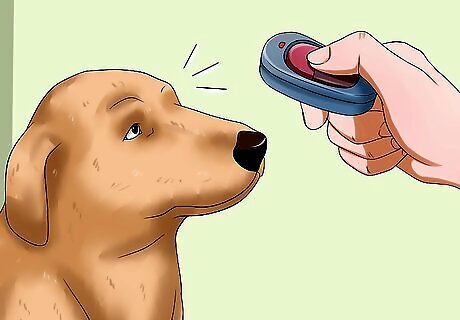
Practice obedience training. Your dog should be trained well and able to respond well to voice commands. Your dog should be able to listen and respond to your command. You will be in control of this introduction.Your dog should know basic commands like sit, stay, and lie down. You can teach your best friend these simple commands in a few ways: Take obedience training classes. Many vets can recommend a good dog trainer. Some pet stores even offer puppy socialization and obedience classes. You and your dog can not only learn helpful commands, but also work on creating a strong bond. Your dog will be more likely to listen and pay attention to you if she feels comfortable with you as an owner and authority figure. Practice commands with your dog. If you and your dog need a refresher course on basic commands like sit, you should practice with your dog in a comfortable place like at home. Practicing these commands will allow the dog to become familiar with your cues and she will be more willing to listen to you. You want these commands to be comfortable with both you and the dog.
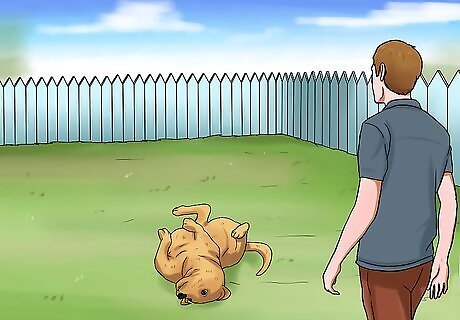
Find a neutral space. You do not want either pet to feel territorial in the introductory space. You also want a place where you can control both animals. A good introductory place might be a living room or family room. You want to avoid places where either animal eats or sleep, as they may feel territorial of the space. You do not want either animal to feel pressured. A neutral space can help the animal to not have additional external stresses. Meeting new friends is stressful enough! Make sure your dog is not feeling confined with too tight of a leash or collar. The neutral space will help you relax as well. You want to be able to be comfortable in this space and be able to observe interactions. Pick a place that is comfortable for all involved.
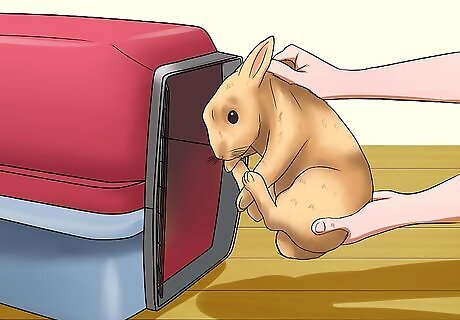
Put the rabbit in a safe environment, such as a travel cage. For the first meeting, you may want to keep the rabbit in a safe space in which the rabbit cannot run away. This will also keep your rabbit safe if something unpredictable happens.
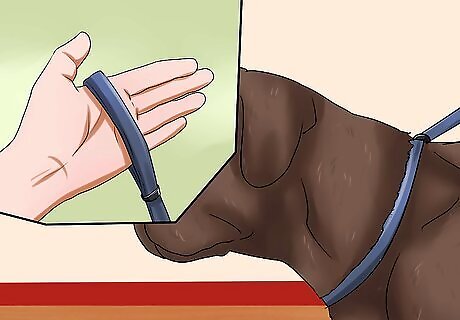
Secure the dog. During the first meeting, you want to make sure you have your dog under firm control. Experts suggest keeping your dog sitting or lying down. This allows you to keep a firm eye on the dog, as well as a way to control him.
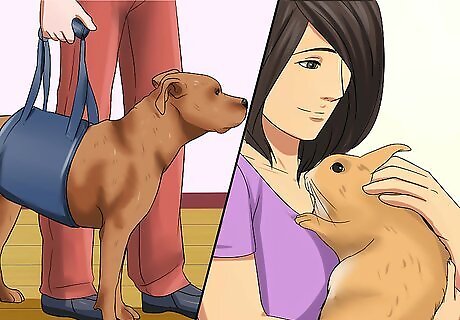
Ask for help. Ask a family member or friend to help by holding your rabbit or dog. You want the most supervision possible and having an extra set of hands and eyes will work to your advantage.
Introducing the Pair
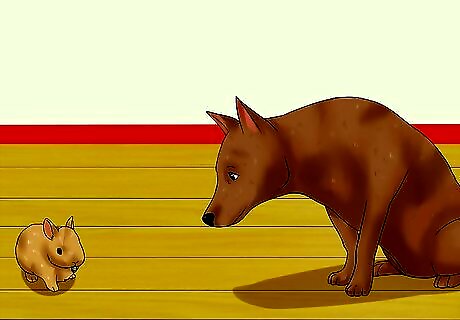
Introduce them slowly. Do not make sudden moves or throw the two animals together too quickly. You should bring one animal into the room with the other to let them get used to each other scents. Give them time to acquaint themselves. You do not want to put pressure on either animal and scare them. Though on the whole, dogs aren't likely to be afraid of rabbits. Your rabbit might feel a little spooked around your pup, though!. Be positive with the slow introduction. Encourage your pets with positive verbal cues like: "Good girl," or "Gentle." Your pets should hear and react to your authoritative and gentle tones. Slow introductions allow your pets to get to know each other and feel more comfortable with one another.
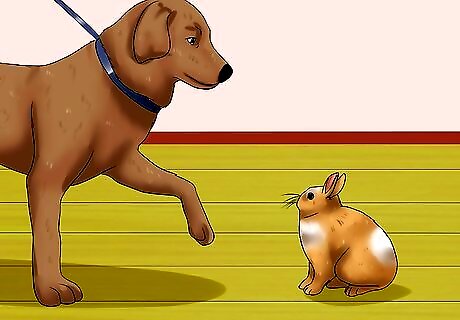
Bring them closer together. The next step is to bring them closer together. You may want to let the rabbit approach the dog. This may help not trigger the rabbit’s natural instinct to run, which may trigger the dog’s instinct to hunt. Watch the body language during this introduction. If the rabbit is kicking, breathing hard, or trying to escape, then remove the dog from the room and let the rabbit calm down. Also be aware that a stressed rabbit may sit in a hunkered down position and attempt to 'play dead.' If the rabbit is not running away, it does not necessarily mean he is accepting the dog's presence - he may just be too frightened to move. If the dog is acting too excited, take time to calm the dog down by having it sit and stay for a few minutes while she calms down. A stressed rabbit may also lay their ears flat against their back while their eyes are bulging.
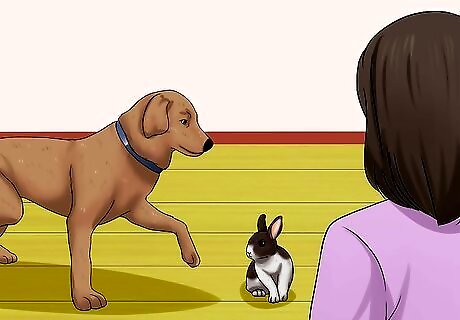
Keep an eye on them. Under no circumstances, do not leave the two animals alone with each other during the first couple of meetings. No matter how much they seem to be getting along, you do not want to take any chances. Make sure each animal is in the right mood for a meeting. Animals, like people, can have bad days. You do not want the first few meetings to happen if an animal is ill or under stress.
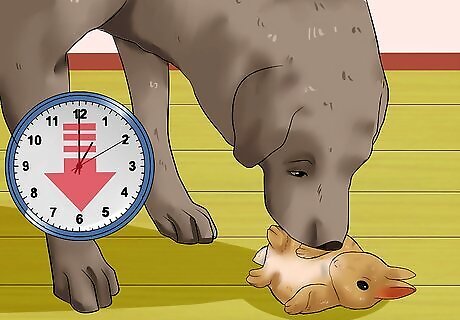
Keep sessions short. Too long exposure to each other may cause too much excitement. This may cause accidental injury to either animal. Watch the excitement level of both animals; once one starts to show symptoms of stress, it is time to stop.
Monitoring Interactions
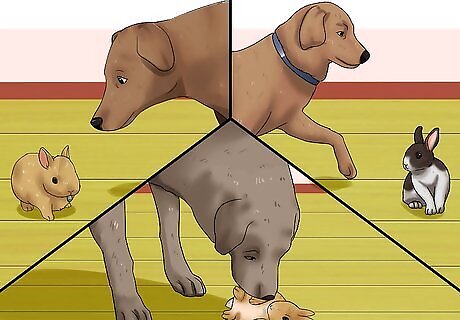
Practice the routine. Your pets may not hit it off right away, and that’s okay. Practice introducing your pets to each other until it becomes a routine. Eventually, your pets will get used to seeing and smelling each other.
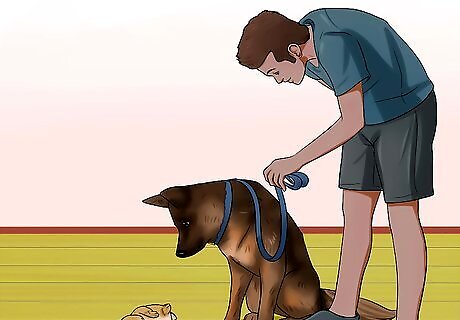
Always pay attention to your pets. Just like children, you do not want to leave your pets unattended! Something may happen to trigger an aggressive instinct in your dog. Perhaps a loud noise might spook the rabbit. Keep an eye on your pets to ensure they are safe.
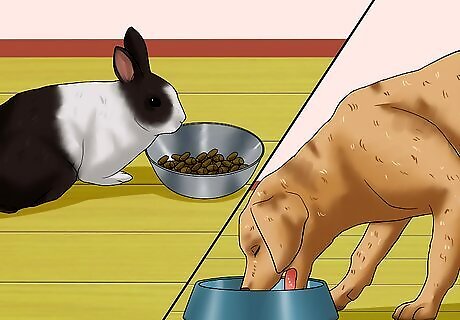
Separate feeding areas. Animals can be territorial around feeding time or feeding areas. Feed your pets in different rooms. If either shows aggression when eating, try feeding them at different times. Other territorial places may include where the animal sleeps or relieves himself. Keep a watchful eye when the rabbit and dog interact near these places. They may act territorial toward you. They may grow jealous of the other with your attention. Make sure you show each animal care without riling protective instincts from the other one.
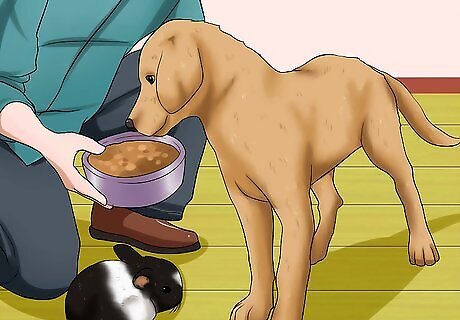
Be patient. Making new friends can be challenging! Give your pets time to get used to you, your house, and each other.
Picking the Right Pet
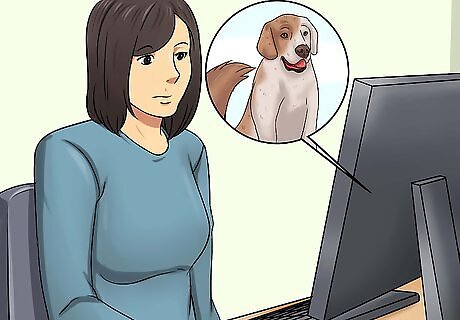
Research rabbit-friendly dogs. If you bring a new dog into the family, make sure it is a rabbit-friendly one. You may want to avoid Retrievers, Labradors and Terriers, which are predisposed to hunting and tracking down animals such as rats and rabbits. These breeds are known for their hunting instincts. A dog's breed may not completely signify a dog's personality. Monitor your dog's personality before considering introducing them to any pet. Dog breeders may disagree on appropriate dog breeds to house with rabbits. Be aware of conflicting opinions when introducing a new dog breed into your home.
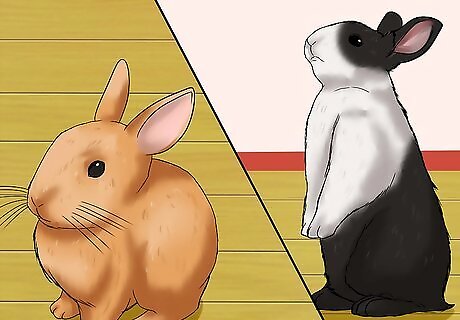
Pick a dog-friendly rabbit. There are wide variety of rabbit breeds and, just like dogs, they can have a variety of personalities. You want to pick a rabbit with a personality that will get along with your furry friends. Recommended breeds for socialization include: Sussex Dutch Himalayan Havana Californian
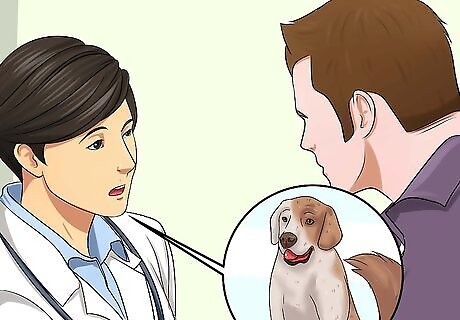
Consult with a vet. You should consult with your vet before you bring any new animals home. You want to make sure your current pets are healthy and well socialized. Stressed or hurt animals may be prone to aggression. Your vet can give your pet a checkup and prepare you with special instructions for your new addition.

















Comments
0 comment